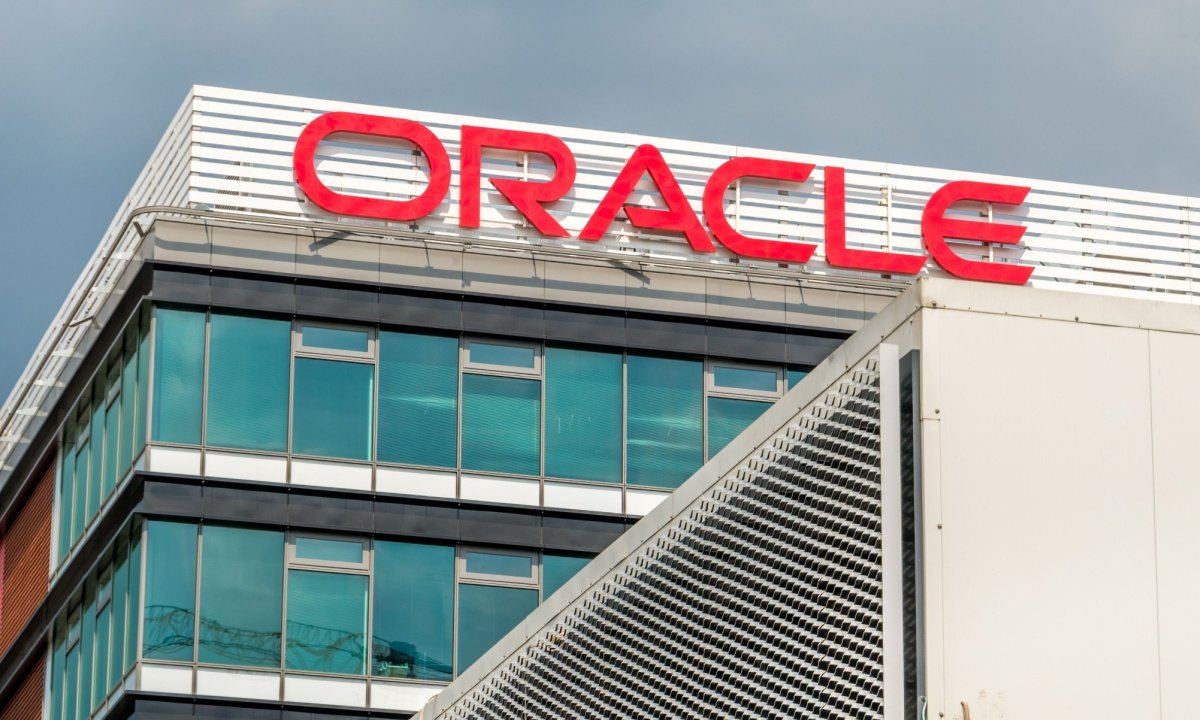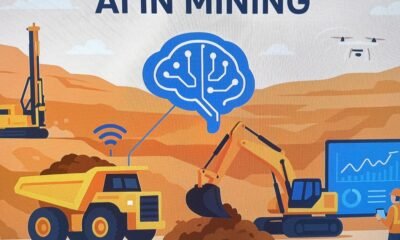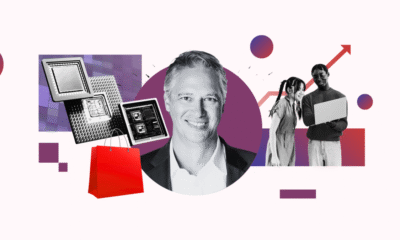AI Research
Inside Its Internal Productivity Push

Salesforce is internally deploying ‘Agentforce,’ its agentic AI platform, to automate tasks and boost employee innovation, signaling a major shift towards autonomous AI in enterprise software.
Salesforce is touting its internal ‘Agentforce’ platform, a proprietary agentic AI system designed to streamline employee workflows and boost innovation. While framed as a key factor in its “Greatest Workplaces” recognition, the move signals a deeper commitment to AI-driven automation that could reshape its core CRM offerings and the broader enterprise software landscape. According to the announcement, the company is positioning itself at the forefront of a “digital labor revolution.”
Salesforce’s AI Dogfooding Strategy
Salesforce, a company synonymous with cloud-based customer relationship management, is making a significant internal bet on agentic AI. The company recently highlighted its proprietary platform, dubbed ‘Agentforce,’ as a cornerstone of its operational strategy, simultaneously linking it to its recognition as one of America’s Greatest Workplaces in Tech for 2025. This isn’t just about employee perks; it’s a clear signal of where the enterprise software giant sees the future of work and, by extension, its product roadmap.
The core promise of Agentforce is to empower Salesforce’s sales and engineering teams by automating routine tasks and delivering intelligent insights. The goal, as articulated by the company, is to free up employees to focus on “building meaningful relationships, solving complex problems, and driving true innovation for our customers.” In essence, Salesforce is dogfooding its own advanced AI capabilities, using its vast workforce as a proving ground for technologies that will inevitably trickle down to its customer-facing products.
Agentic AI, in this context, refers to AI systems capable of performing tasks autonomously, often by breaking down complex requests into smaller steps, executing them, and learning from the outcomes. For a company like Salesforce, this could mean anything from automatically drafting sales emails based on CRM data to intelligently triaging engineering support tickets or even proactively identifying potential customer churn risks. The implications for productivity are substantial, but so are the questions around how these systems integrate with human workflows and the data privacy considerations involved.
The company’s blog post, which served as the primary announcement, heavily emphasizes the recruitment angle, inviting tech professionals to “join the #1 AI CRM that’s leading the digital labor revolution.” This dual messaging — celebrating workplace culture while showcasing cutting-edge internal AI — suggests a strategic effort to attract top talent by demonstrating a commitment to both employee empowerment and technological leadership. It’s a smart play in a competitive talent market, positioning Salesforce not just as an employer, but as an innovator actively shaping the future of work.
What this means for the broader industry and Salesforce’s extensive customer base is a more autonomous, intelligent CRM experience. If Agentforce proves successful in significantly boosting internal efficiency and innovation, it’s only a matter of time before similar agentic capabilities become standard features within the Salesforce ecosystem. This could translate into CRM platforms that don’t just store data, but actively work on behalf of sales teams, predict customer needs with greater accuracy, and even automate complex service processes end-to-end.
However, the transition to such a “digital labor revolution” isn’t without its challenges. Integrating agentic AI effectively requires robust data governance, clear ethical guidelines, and a careful balance between automation and human oversight. While Salesforce’s internal deployment of Agentforce offers valuable real-world testing, the complexities scale significantly when deployed across thousands of diverse customer organizations. The company’s current focus on internal benefits is a necessary first step, but the real test will be how seamlessly and effectively these agentic capabilities empower its customers in the years to come.
AI Research
Artificial Intelligence Stocks Rally as Nvidia, TSMC Gain on Oracle Growth Forecast

This article first appeared on GuruFocus.
Sep 11 – Oracle (ORCL, Financial) projected its cloud infrastructure revenue will surge to $114 billion by fiscal 2030, a forecast that triggered strong gains across artificial intelligence-related stocks.
The company also outlined plans to spend $35 billion in capital expenditures by fiscal 2026 to expand its data center capacity.
Shares of Oracle soared 36% on Wednesday on the outlook, as investors bet on rising demand for GPU-based cloud services. Nvidia (NASDAQ:NVDA), which supplies most of the chips and systems for AI data centers, climbed 4%. Broadcom (NASDAQ:AVGO), a key networking and custom chip supplier, gained 10%.
Other chipmakers also advanced. Advanced Micro Devices (AMD,) added 2%, while Micron Technology (MU, Financial) increased 4% on expectations for higher memory demand in AI servers. Taiwan Semiconductor Manufacturing Co. (NYSE:TSM), which produces chips for Nvidia and other AI players, rose more than 4% after reporting a 34% jump in August sales.
Server makers Super Micro Computer (SMCI, Financial) and Dell Technologies (DELL) each rose 2%, supported by their role in assembling Nvidia-powered systems. CoreWeave (CRWV), an Oracle rival in the neo-cloud segment, advanced 17% as investors continued to bet on accelerating AI compute demand.
AI Research
Oracle Health Deploys AI to Tackle $200B Administrative Challenge

Oracle Health introduced tools aimed at easing administrative healthcare burdens and costs.
AI Research
Can AI optimize building retrofits? Research shows promise in CO₂ reduction but gaps in economic reasoning

Researchers from Michigan State University have conducted one of the first systematic evaluations of large language models (LLMs) in the domain of building energy retrofits, where decisions on upgrades such as insulation, heat pumps, and electrification can directly impact energy savings and carbon reduction.
The study, titled “Can AI Make Energy Retrofit Decisions? An Evaluation of Large Language Models,” published on arXiv, examines whether LLMs can reliably guide retrofit decision-making across diverse U.S. housing stock. It addresses the limitations of conventional methods, which are often too technical, data-heavy, or opaque for practical adoption, particularly at large scale.
How accurate are AI models in selecting retrofit measures?
The researchers tested seven widely used LLMs, ChatGPT o1, ChatGPT o3, DeepSeek R1, Grok 3, Gemini 2.0, Llama 3.2, and Claude 3.7, on a dataset of 400 homes drawn from 49 states. Each home profile included details such as construction vintage, floor area, insulation levels, heating and cooling systems, and occupant patterns. The models were asked to recommend retrofit measures under two separate objectives: maximizing carbon dioxide reduction (technical context) and minimizing payback period (sociotechnical context).
The analysis found that LLMs were able to deliver effective results in technical optimization tasks. Accuracy reached 54.5 percent when looking at the single best solution and as high as 92.8 percent when top five matches were considered, even without fine-tuning. This reflects the models’ ability to align with physics-based benchmarks in scenarios where clear engineering goals, such as cutting carbon emissions, are prioritized.
On the other hand, when the focus shifted to minimizing payback period, results weakened substantially. Top-1 accuracy fell as low as 6.5 percent in some models, with only Gemini 2.0 surpassing 50 percent at the broader Top-5 threshold. The study concludes that economic trade-offs, which require balancing upfront investment against long-term savings, remain difficult for LLMs to interpret accurately.
How consistent and reliable are AI-generated decisions?
The study also examined whether different LLMs converged on the same recommendations. Here, performance was less encouraging. Consistency between models was low, and in some cases their agreement was worse than chance. Interestingly, the models that performed best in terms of accuracy, such as ChatGPT o3 and Gemini 2.0, were also the ones most likely to diverge from other systems. This indicates that while some models may excel, they do not necessarily produce results that align with peers, creating challenges for standardization in real-world applications.
The findings underscore the difficulty of relying on AI for high-stakes energy decisions when consensus is lacking. In practice, building owners, policymakers, and utility companies require not just accurate but also consistent recommendations. Low inter-model reliability highlights the importance of developing frameworks that validate and harmonize AI outputs before they can be integrated into large-scale retrofit programs.
What shapes AI reasoning in retrofit decisions?
The researchers also explored how LLMs arrive at their decisions. Sensitivity analysis showed that most models, like physics-based baselines, prioritized location and building geometry. Variables such as county, state, and floor space were consistently weighted as the most influential factors. However, the models paid less attention to occupant behaviors and technology choices, even though these can be critical in shaping real-world outcomes.
The reasoning patterns offered further insight. Among the tested systems, ChatGPT o3 and DeepSeek R1 provided the most structured, step-by-step explanations. Their workflows followed an engineering-like logic, beginning with baseline energy assumptions, adjusting for envelope improvements, calculating system efficiency, incorporating appliance impacts, and finally comparing outcomes. Yet, while the logic mirrored engineering principles, it was often simplified, overlooking nuanced contextual dependencies such as occupant usage levels or detailed climate variations.
The authors also noted that prompt design played a key role in outcomes. Slight adjustments in how questions were phrased could significantly shift model reasoning. For example, if not explicitly instructed to consider both upfront cost and energy savings, some models defaulted to choosing the lowest-cost option when evaluating payback. This sensitivity suggests that successful deployment of AI in retrofit contexts will depend heavily on careful prompt engineering and domain-specific adaptation.
A cautious but forward-looking conclusion
The evaluation highlights both the promise and the limitations of current LLMs in building energy retrofits. On one hand, the ability to achieve near 93 percent alignment with top retrofit measures in technical contexts shows significant potential for AI to streamline decision-making and improve energy efficiency strategies. On the other, weak performance in sociotechnical trade-offs, low inter-model consistency, and simplified reasoning demonstrate that these tools are not yet ready to replace domain expertise.
To sum up, LLMs can complement but not substitute traditional methods and expert judgment in retrofit planning. They recommend further development of domain-specific models, fine-tuning with validated datasets, and hybrid approaches that integrate AI with physics-based simulations to ensure accuracy and traceability.
For policymakers and practitioners, the study provides an important benchmark: AI can indeed assist in advancing retrofit strategies, especially for carbon reduction, but its current shortcomings demand careful oversight. As cities and communities push toward energy transition goals, ensuring that AI systems are transparent, consistent, and context-aware will be essential before they can be deployed at scale.
-

 Business2 weeks ago
Business2 weeks agoThe Guardian view on Trump and the Fed: independence is no substitute for accountability | Editorial
-
Tools & Platforms1 month ago
Building Trust in Military AI Starts with Opening the Black Box – War on the Rocks
-

 Ethics & Policy2 months ago
Ethics & Policy2 months agoSDAIA Supports Saudi Arabia’s Leadership in Shaping Global AI Ethics, Policy, and Research – وكالة الأنباء السعودية
-

 Events & Conferences4 months ago
Events & Conferences4 months agoJourney to 1000 models: Scaling Instagram’s recommendation system
-

 Jobs & Careers2 months ago
Jobs & Careers2 months agoMumbai-based Perplexity Alternative Has 60k+ Users Without Funding
-

 Podcasts & Talks2 months ago
Podcasts & Talks2 months agoHappy 4th of July! 🎆 Made with Veo 3 in Gemini
-

 Education2 months ago
Education2 months agoVEX Robotics launches AI-powered classroom robotics system
-

 Education2 months ago
Education2 months agoMacron says UK and France have duty to tackle illegal migration ‘with humanity, solidarity and firmness’ – UK politics live | Politics
-

 Funding & Business2 months ago
Funding & Business2 months agoKayak and Expedia race to build AI travel agents that turn social posts into itineraries
-

 Podcasts & Talks2 months ago
Podcasts & Talks2 months agoOpenAI 🤝 @teamganassi



















